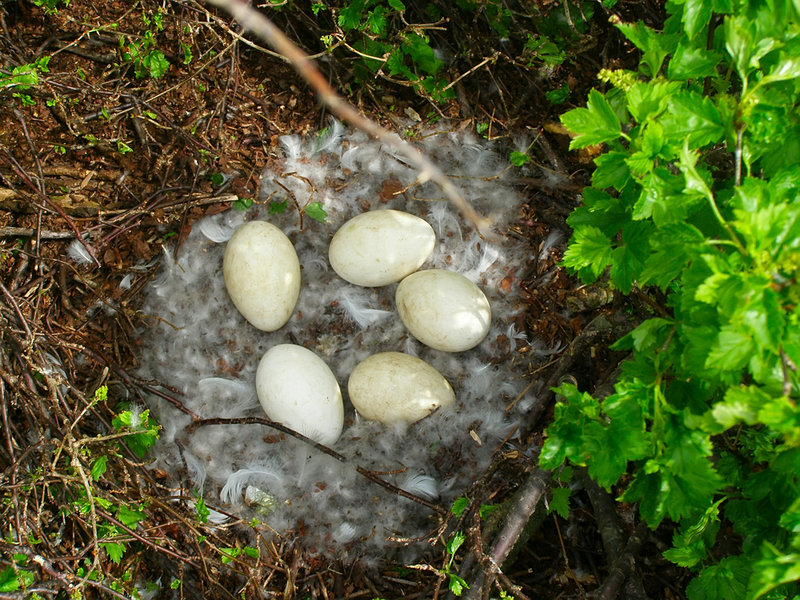Humans are unusual among mammals in that we build our houses. Sometimes we use natural materials and other times plastic or other artificial materials that do not occur in nature. Beavers are the only other local mammals I can think of that build substantial houses.
Most birds, however, are excellent builders, manifested usually in the form of a nest. Some nests are extraordinarily intricate while others are massive.
The excellent skills of birds in building nests are remarkable in at least three ways.
First, most of the building is accomplished with the aid of only the bill. The feet may help in holding material and the body itself can be used to mold the shape of the nest, but most of the work is done with the bill.
Second, birds don’t get a lot of practice. Most birds build a single nest per season and some use the same nest for years.
Lastly, the instructions on how to build a nest appear to be genetically encoded. Birds just know how to build a nest, although in some species, the older, more experienced birds seem to build with more skill than first-timers.
The source of most of the information in today’s column comes from a recent book by Peter Goodfellow, “Avian Architecture: How Birds Design, Engineer & Build” (Princeton University Press).
The book is richly illustrated with more than 300 color images (photographs and drawings). The text is limited but adequate. The drawings and text allow the author to give the reader a firm understanding of how various nests are made.
The coverage goes from simple nests to more complex, sometimes communal nests. Goodfellow breaks nests into 12 categories and devotes a chapter to each type. The author provides several examples of each type of nest. Examples are drawn from birds around the world.
The simplest nests are called scrape nests. They are built by simply gouging a shallow depression in the ground. Sometimes eggs are laid directly on the ground and in other species, a lining is created in the scrape. Female common eiders pluck feathers from their breasts to line their simple nests.
The depth of the scrape is critical. For pectoral sandpipers nesting on the arctic tundra, the scrape depth minimizes heat loss. Shallow scrapes expose the eggs to wind chill and deep scrapes cause the eggs to lose heat to the permafrost below.
Nesting on the ground is risky, so it is no surprise that a scrape nest and the eggs laid within it are camouflaged. The young usually show precocial development so they can leave the nest soon after hatching.
A number of birds nest in holes and tunnels. Some, like woodpeckers, make their own holes and some, like kingfishers, make their own tunnels in riverbanks.
Other species are secondary cavity nesters, using either natural or existing holes or tunnels. Such birds may elaborate the holes by adding linings of plant material. A good local example is the house wren.
The great hornbill of southeastern Asia provides a remarkable example. The female adds mud to the opening of her nest cavity, essentially sealing herself in with only a slot opening to the outside. She and her young, once they hatch, are dependent on the male for all their food. The mother may remain cooped up in her nest for two months. The narrow opening to the nest prevents predators like martens from entering.
Aquatic nests are made by only four types of birds: jacanas, marsh terns, grebes and rails. These nests are immune from attacks by terrestrial predators.
The architecture of an aquatic nest usually includes aquatic plant materials that float due to air spaces within, thus keeping the eggs above water. Some aquatic nests are fixed to the shoreline while others float in deeper water.
Cup-shaped nests are the most common type of nest. A strong cup with a lining provides protection for the eggs and chicks. The nest is anchored strongly, usually with spiders’ silk. Most cup-shaped nests are located above the ground.
The ruby-throated hummingbird attaches gray lichens to the outer wall of its nest. The nest looks like the broken base of a branch of the tree on which it sits.
Domed nests combine characteristics of cup-shaped and cavity nests. The entrance hole is an important architectural consideration, minimizing predator risk and the chilling effect of the dominant winds.
The book covers so much more: mound incubators that use the heat of composting material, platform nesters, colonial nesters and others. The text is easy to understand and can be shared with children. This book provides a great entry to the wonder of birds.
Herb Wilson teaches ornithology and other biology courses at Colby College. He welcomes reader comments and questions at
whwilson@colby.edu.
Send questions/comments to the editors.



Success. Please wait for the page to reload. If the page does not reload within 5 seconds, please refresh the page.
Enter your email and password to access comments.
Hi, to comment on stories you must . This profile is in addition to your subscription and website login.
Already have a commenting profile? .
Invalid username/password.
Please check your email to confirm and complete your registration.
Only subscribers are eligible to post comments. Please subscribe or login first for digital access. Here’s why.
Use the form below to reset your password. When you've submitted your account email, we will send an email with a reset code.